1. Separate Bidets

Once a common sight in upscale bathrooms, standalone bidet sprayers are becoming rare. Modern bathrooms often integrate bidet functions into toilet seats or use advanced smart toilets. This streamlines the design while saving space, pushing standalone bidets into the past. The shift towards integrated bidet options has made them more accessible and less intrusive, aligning with the trend of multifunctional bathroom fixtures.
Many smart toilets even include heated seats, self-cleaning mechanisms, and adjustable water pressure, making them a more convenient all-in-one solution. According to The Spruce, bidets are now more common in countries like Japan and parts of Europe, where they are integrated into modern toilets. In the U.S., as bidets become more common in mainstream homes, their traditional standalone forms are becoming obsolete.
2. Carpeted Floors
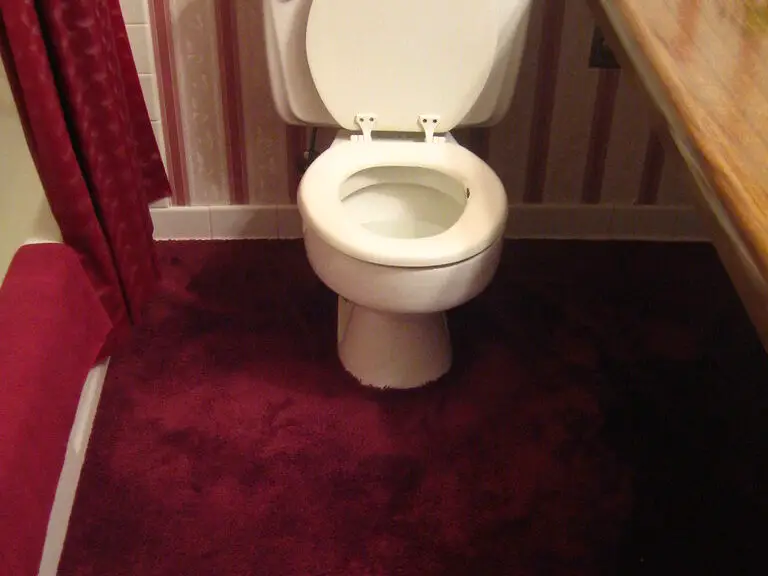
Bathroom carpeting, popular in the 1970s and 1980s, is long gone for hygienic reasons. Today’s homeowners prefer tile or vinyl flooring for easy cleaning and water resistance. Plush bath mats have replaced wall-to-wall carpet for a cleaner, more modern look. Carpeted floors trap moisture and can harbor bacteria, leading to the shift in preferences for materials like porcelain, ceramic, or luxury vinyl planks.
These alternatives offer better water resistance, durability, and ease of maintenance, which is ideal for high-moisture areas like bathrooms. According to Health.com, modern floorings like tile are more hygienic and durable. While bath mats are still common, they now offer more absorbent, quick-drying materials, making the bathroom both stylish and practical.
3. Avocado Green Fixtures
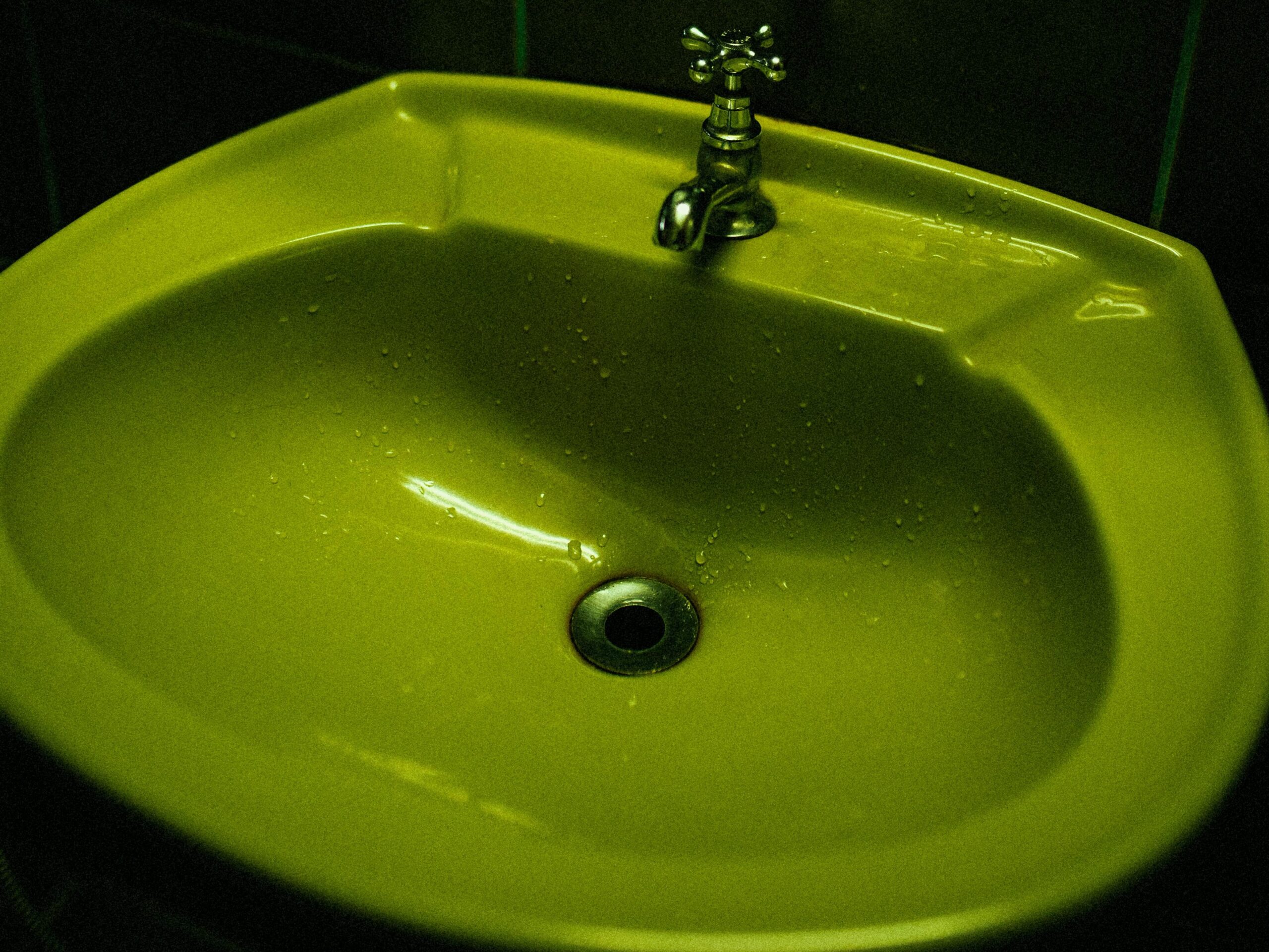
Avocado green sinks, tubs, and toilets were a hallmark of mid-century bathrooms. Modern design trends favor neutral tones or sleek white finishes for a timeless aesthetic. These retro fixtures now seem dated and out of place in contemporary spaces. Many homes have opted for brighter, airier tones, with designs shifting towards minimalist and clean lines.
The once-popular avocado green has made way for the rise of cool greys, soft whites, and even matte black finishes in today’s bathroom trends. In fact, HGTV highlights that homeowners are replacing these outdated colors to create a more serene and sophisticated ambiance. What was once considered bold now feels restrictive and overly flashy, making way for more universally appealing color schemes.
4. Pink Tile Bathrooms
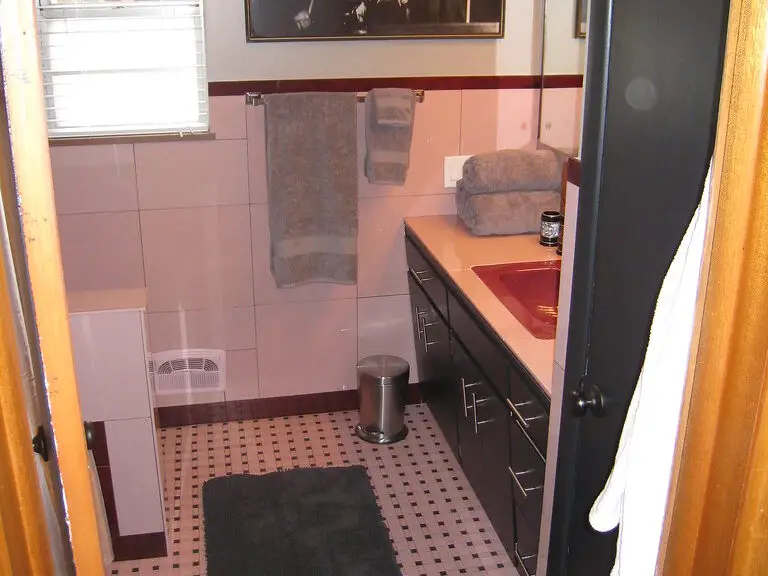
Pink tile with matching fixtures defined the bathrooms of the 1950s. Modern trends lean toward muted tones or minimalistic designs, leaving the pink aesthetic behind. Though nostalgic, this look is rarely replicated in modern renovations. While pastel colors had their time in mid-century bathrooms, they’ve given way to a preference for more neutral, calming tones like beige, white, and grey.
Pink tile is associated with outdated, overly feminine aesthetics, leading many homeowners to opt for neutral tiles that feel more timeless and versatile. Though pink fixtures are rarely seen in new homes, some homeowners are embracing retro revival with subtle accents in contemporary designs. According to The New York Times, there’s a small resurgence in using pink tiles as a fun, vintage-inspired touch.
5. Medicine Cabinets with Mirrors
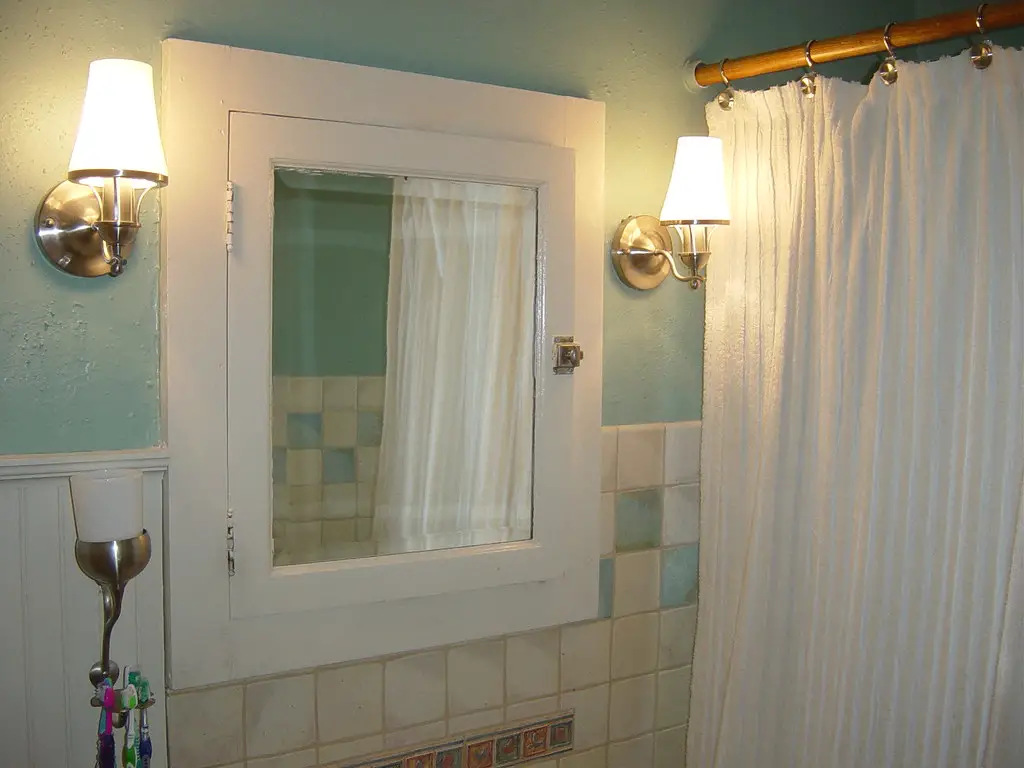
Mirrored medicine cabinets were once a bathroom staple for storage and convenience. In their place, modern bathrooms favor sleek, frameless mirrors or hidden storage solutions. The bulky cabinet aesthetic no longer aligns with today’s clean, streamlined designs. With more emphasis on open shelving and integrated storage in bathrooms, the traditional medicine cabinet is slowly being replaced by minimalist cabinetry that maximizes space while blending into the design.
Frameless mirrors paired with open shelving or mirrored vanities have taken over as a more chic, contemporary option. The rise of innovative storage solutions like recessed shelves or hidden compartments allows homeowners to keep their bathroom clutter-free while maintaining a modern look. According to Architectural Digest, bathrooms are embracing clever storage options, with mirrors being used more for style than function.
6. Fluorescent Overhead Lights
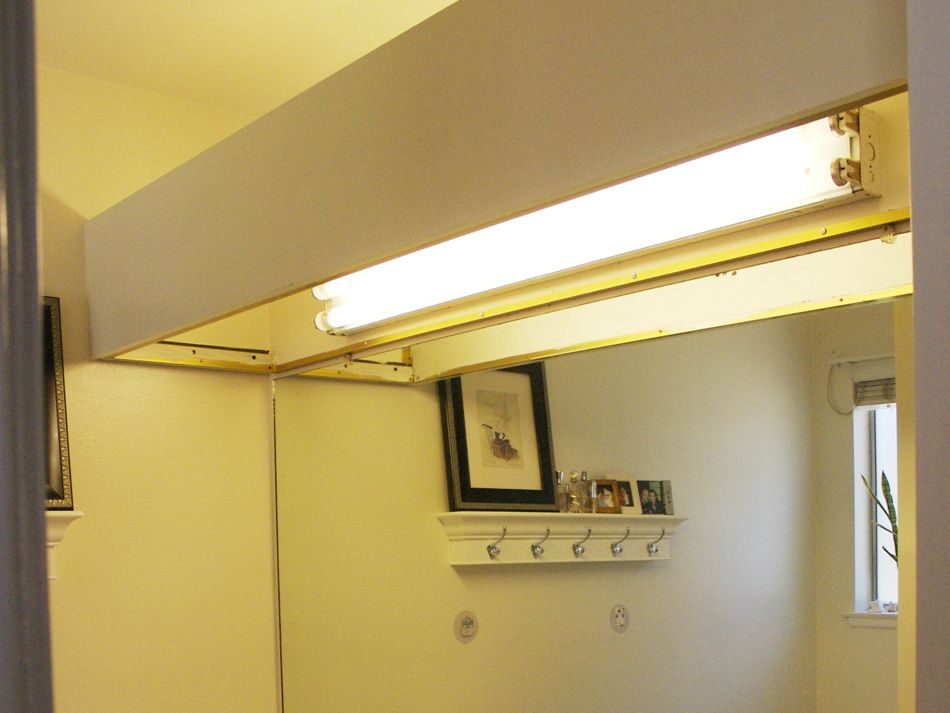
Harsh fluorescent lights were once the go-to choice for bathrooms, but they’re now widely disliked. LED lighting with customizable warmth and brightness has replaced these outdated fixtures. This shift creates a more inviting and energy-efficient atmosphere. Fluorescent lighting can cast an unflattering, cold light, while modern LEDs offer a more flattering and adjustable glow to suit different times of day and activities.
Many modern designs incorporate dimmable LED lights to create a spa-like environment in the bathroom, giving homeowners more control over the ambiance. Furthermore, LEDs are more energy-efficient and have a much longer lifespan than traditional bulbs. According to Forbes, the long-term energy savings and versatility of LED lighting make it a top choice for bathroom renovations.
7. Shower Curtains

Shower curtains are disappearing in favor of glass shower enclosures or wet room designs. Glass provides a sleek, open look that aligns with modern trends. Curtains are seen as less hygienic and visually cluttered in contemporary spaces. Shower curtains can easily trap moisture, leading to mold and mildew buildup, while glass enclosures are much easier to maintain and clean.
The trend has shifted toward frameless glass shower doors or even completely open wet room designs, which make the bathroom feel larger and more luxurious. Glass also complements the trend of creating open, airy bathrooms that focus on maximizing space. Real Simple discusses how glass shower doors have become the more stylish and practical option for modern bathrooms.
8. Over-the-Toilet Storage Units
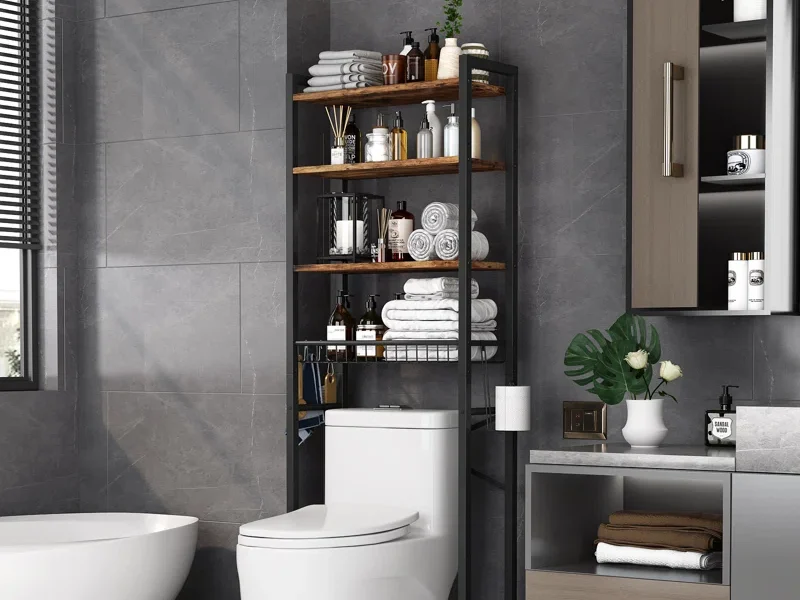
The over-the-toilet storage rack, once a bathroom essential, has fallen out of favor. Modern designs incorporate built-in storage or minimalist shelving instead. These outdated units now seem clunky compared to more integrated solutions. Over-the-toilet units were originally a great way to maximize small bathroom spaces, but they often disrupt the clean lines and modern look of a well-designed bathroom.
Today’s bathrooms use built-in cabinets or custom shelving that blend into the design, offering practical storage without the bulky appearance. Modern bathrooms also favor vertical storage solutions, like floating vanities or wall-mounted shelves, to keep the space feeling open and uncluttered. Elle Decor notes that integrated, seamless storage is becoming the norm in bathroom design.
9. Popcorn Ceilings
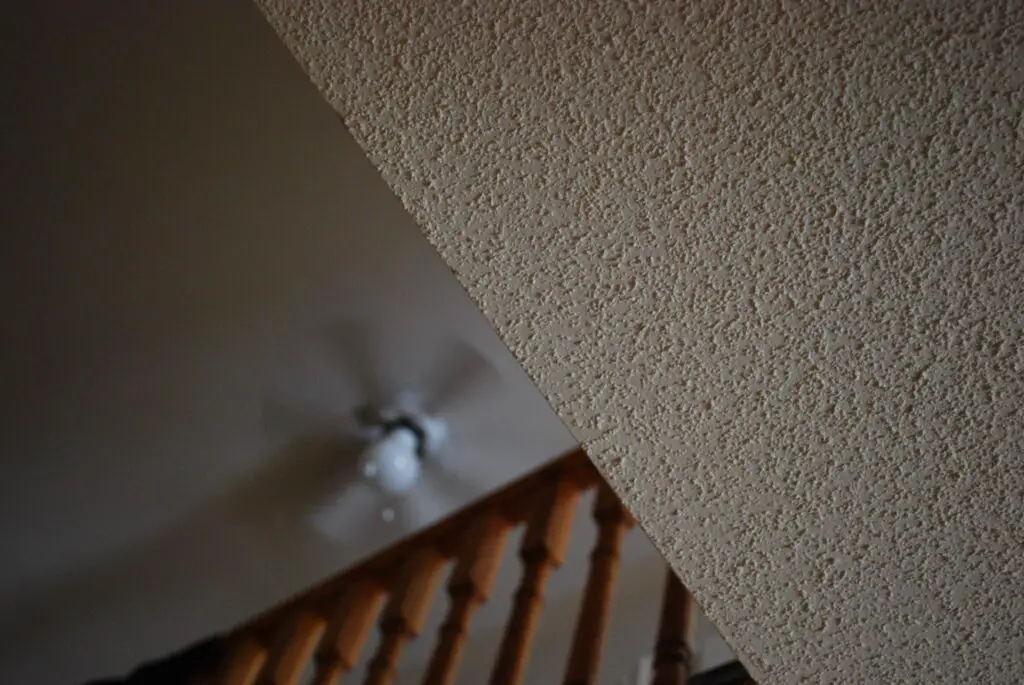
Popcorn-textured ceilings, a common feature in mid-century homes, are rarely seen in modern bathrooms. They trap moisture and are difficult to clean, making them unsuitable for humid spaces. Smooth, painted ceilings now dominate contemporary designs. Popcorn ceilings are not only harder to maintain, but they also tend to discolor over time, making them less visually appealing.
Homeowners looking to refresh their bathrooms are opting for smooth ceilings that can be easily painted and maintained. This trend reflects a broader desire for sleek, clean aesthetics in all areas of the home, especially in spaces like bathrooms where cleanliness is paramount. According to The Spruce, many homeowners are choosing to remove popcorn ceilings for both aesthetic and practical reasons.
10. Jacuzzi Tubs
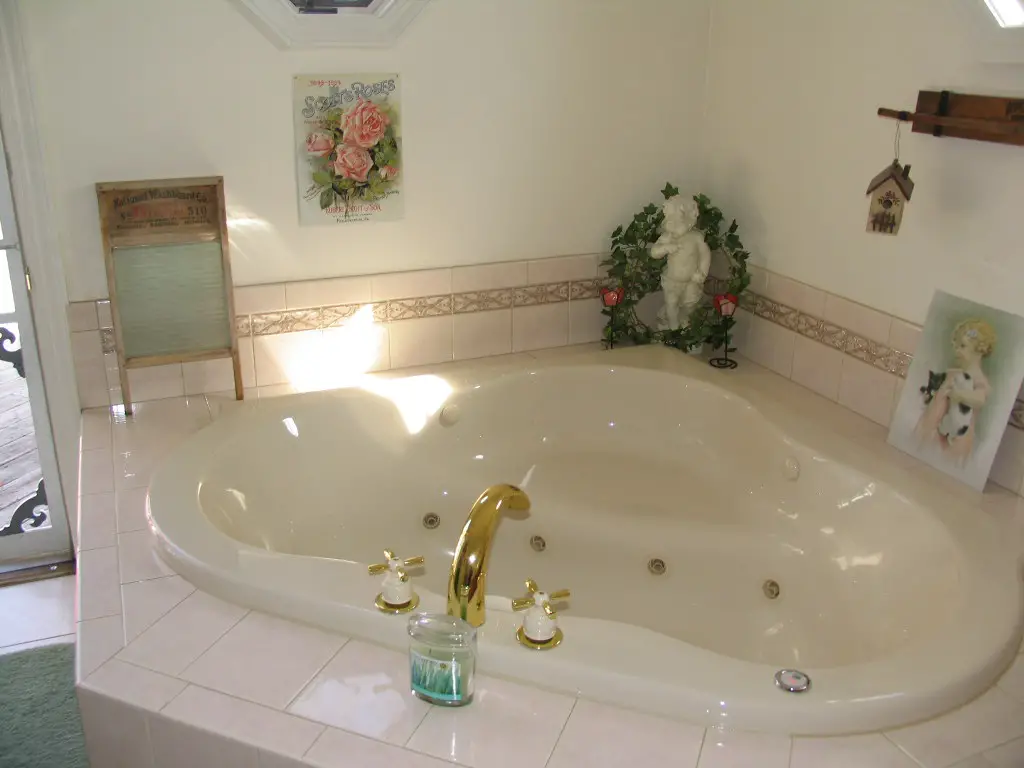
Large, clunky Jacuzzi tubs were a symbol of luxury in the 1980s and 1990s but are now considered impractical. They take up too much space and are rarely used in modern homes. Freestanding tubs or expanded showers are the new luxury standard. Jacuzzi tubs often require excessive maintenance and take up a lot of room in smaller bathrooms, whereas freestanding tubs create a more open, minimalist design that complements today’s bathroom trends.
Modern luxury bathrooms now favor spacious showers with multiple showerheads or high-tech features like steam generators, rain showers, or built-in seating. As The Washington Post highlights, modern buyers are opting for functional, space-saving features that can still provide a spa-like experience without the excess of traditional Jacuzzi tubs.
11. Tile Countertops
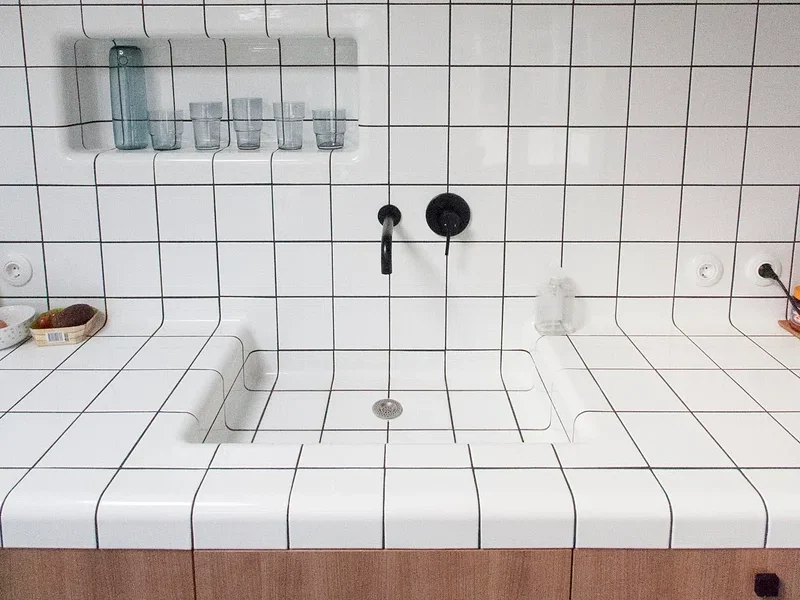
Tile countertops were once popular for their durability, but the grout lines made them hard to clean. Modern bathrooms favor quartz, marble, or solid-surface materials for a seamless and hygienic look. Tile counters have become a relic of the past. While tile countertops provided a customizable, cost-effective solution, the grout lines can collect grime, making them difficult to keep clean in high-moisture areas like bathrooms.
Materials like quartz, marble, and solid-surface countertops now provide a sleek, easy-to-clean alternative without the maintenance issues associated with tile. Many modern bathrooms also embrace the aesthetic of larger slabs of natural stone, eliminating the need for smaller tile pieces. According to Houzz, homeowners are increasingly opting for these materials due to their durability and luxury appeal.
12. Brass Faucet Fixtures
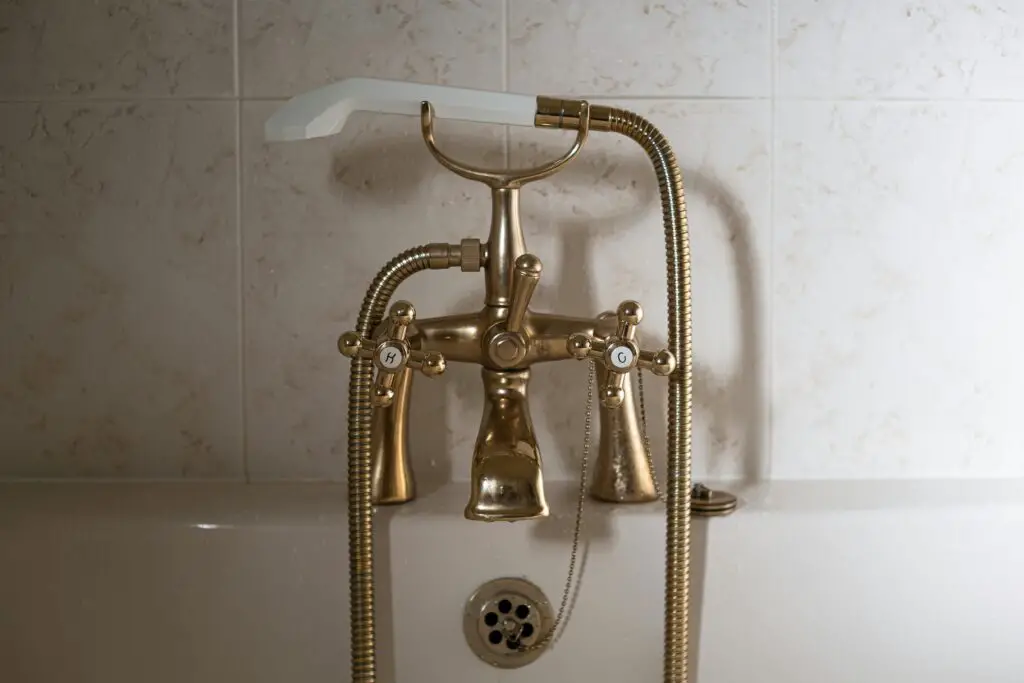
Shiny brass faucets were a go-to in the 1980s, but they’ve since been replaced by matte finishes like black, nickel, or brushed gold. Modern trends prioritize understated elegance over flashy designs. Brass now feels too bold for today’s subdued palettes. Matte black and brushed gold finishes have become the new standard for bathroom fixtures, as these designs offer a more subtle and refined appearance.
The harsh shine of brass has fallen out of favor in favor of finishes that complement the minimalist aesthetic in modern bathrooms. According to House Beautiful, matte finishes provide a sophisticated, elegant look that matches current design trends.
13. Pedestal Sinks

Pedestal sinks, which provide no cabinet storage underneath, have given way to undermount and vessel sinks that are built into a larger vanity. These designs have a cleaner look and are easier to maintain. Pedestal sinks are now seen as outdated and less functional. While pedestal sinks offered a classic, clean look in small bathrooms, the lack of storage beneath them made them impractical for modern families who need space to store toiletries and cleaning supplies.
Undermount sinks paired with large vanities or vessel sinks with integrated storage solutions are now the preferred choice for contemporary bathroom designs. These designs allow for more storage while maintaining a sleek, uncluttered appearance. Better Homes & Gardens discusses how undermount sinks and other modern styles have become the go-to choice for homeowners looking to maximize space.
